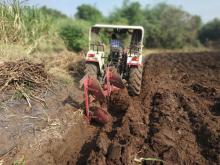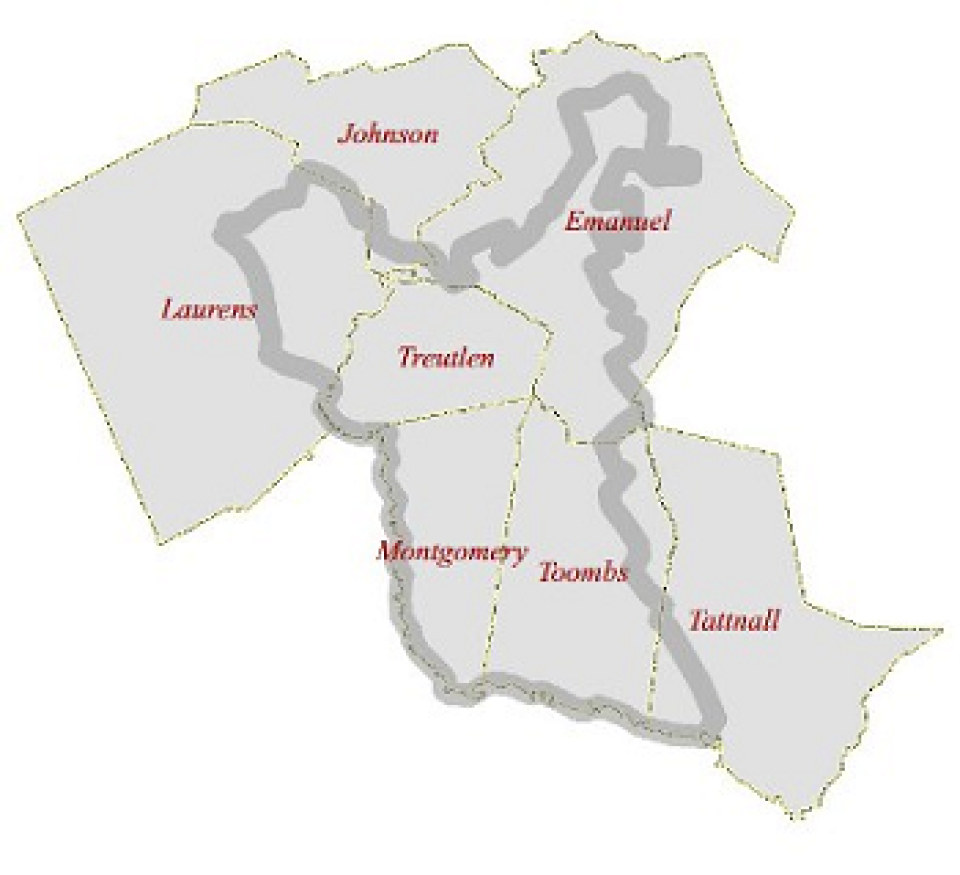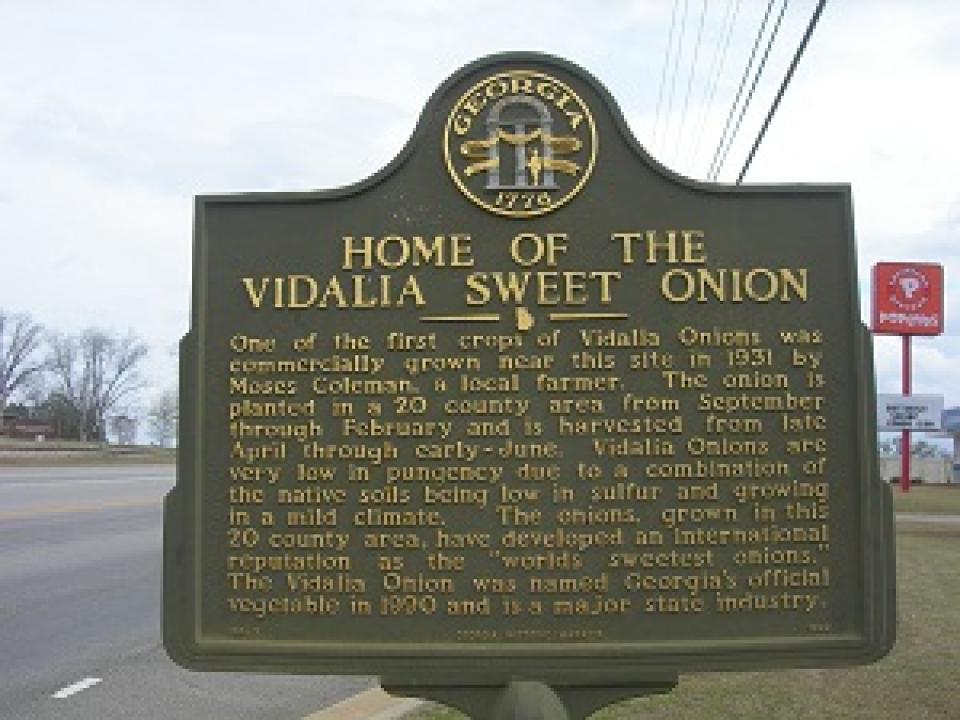
Fast, affordable Internet access for all.

Known for decades as the "Sweet Onion Capital of the World," tourists are still drawn to the rural farmlands of Toombs County in east central Georgia for the annual Vidalia Onion Festival.
But in early November 2021, officials from the member-owned electric cooperative Altamaha Electric Membership Corporation (EMC), flanked by an assortment of state and local officials, gathered at the sprawling L.G. Herndon Farms to announce the cultivation of a new venture. Through its newly created subsidiary Altamaha Fiber, the 86-year-old cooperative recently started construction of a fiber-to-the-home network to serve its 14,000 members who live in Toombs County and in the six neighboring counties (Emanuel, Johnson, Laurens, Montgomery, Tattnall, and Treutlen).
A 5,000-acre spread where they grow Vidalia onions, greens, soybeans, and corn (with over 1,600 cattle and a trucking company on the property), L.G. Herndon Farms was chosen as the site to make the announcement because the farm also happened to be the first business test customer for Altamaha Fiber.
Fiber-to-this-farm will allow for precision agriculture. And, as reported by The Advance, Phil Proctor, the engineer overseeing network construction, noted an added benefit, especially in an area that prizes college football in the ACC: “The lines coming into this building would allow owner Bo Herndon to live stream the Georgia Tech vs. Virginia Tech football game in vivid 4k resolution.”
Beyond the Herndon farm, Georgia Public Service Commissioner Jason Shaw spoke of the far ranging benefits of broadband for the region:
Quality broadband access is key to competing in a 21st-century economy. You can’t participate in e-commerce, education, or telemedicine without access to the Internet. It’s that simple. I’m so pleased to be here today and grateful for the leaders of Altamaha EMC who are willing to provide this critical service to their members and community.
Congressman Rick Allen was also on hand to congratulate the cooperative for embarking on the project, saying it “will ensure that rural Georgians are not left behind simply due to their address.”
State Senate Bill and Federal Funds Open the Floodgates
It was in 2019 when Altamaha EMC, and nearly two dozen other Georgia electric cooperatives, started making plans to bring broadband to its members, thanks to the passage of a state law known as Senate Bill 2. Although electric cooperatives in Georgia were not prohibited from getting into the broadband business, the 2019 law made it clear that electric co-op’s in the Peach State were indeed allowed to expand their utility offerings to include high-speed Internet service.
Though most electric cooperatives who offer broadband service are building fiber networks, initially Altamaha EMC had something different in mind, Proctor explained at the Herndon Farms announcement:
Honestly, we were seeking cheaper options than fiber cables because we knew the service had to be able to sustain itself rather than merely clinging to the subsidization by the electric side of the business.
This likely means they were considering a fixed wireless or hybrid fiber/wireless solution and so it’s worth noting that, aside from the often different subscriber experiences between the two types of technology deployments, it’s uncertain whether fixed wireless is cheaper over the long term. Fiber networks require low maintenance costs over the life of the infrastructure, whereas wireless hardware and electronics only last 5-7 years before needing to be replaced.

What changed the calculation, however, was all of the federal funds Altamaha EMC would be eligible for to pay for network construction, building off the cooperative’s existing fiber lines that connect its electric substations.
In August of 2021, Altamaha EMC was awarded $21 million from the USDA’s ReConnect program – a $10.6 million grant and a $10.6 million loan – to kick-start network construction that once complete will reach nearly 6,700 households, 25 educational facilities, 17 community anchor institutions, 10 health care facilities, 573 businesses, and 207 farms across 246 square miles.
The cooperative also received $8.6 million from the Rural Digital Opportunity Fund (RDOF) to help connect nearly 6,200 locations in the project area. And to further sweeten the pot of construction funds, Altamaha EMC partnered with Toombs and Montgomery County officials to access an additional $10 million, which is being allocated out of those two counties’ Rescue Plan funds.
While a handful of members have been lit up for service over the last month or so, the network is expected to take between 3 to 5 years to build out as construction crews plan to deploy over 1,500 miles of fiber for the project.
Peeling Back the Benefits
If cutting onions in Toombs County didn’t make Altamaha EMC members cry, the cost of residential service may bring tears of joy. Altamaha Fiber is offering symmetrical gig speed service for just $75/month. Residents can also get 2.5 Gigabits Per Second (Gbps) download/1.5 Gbps upload for $150/month. And for an additional $20/month members can add VoIP phone service.
At the announcement event in November, PSC Commissioner Jason Shaw, who himself lives on a farm with his family, peeled back the layers of benefits the fiber network would bring to the region.

“It’s not just economic development like it used to be. Now it’s so much more than that because it is a quality of life issue. You have to have Internet [access] to do anything these days. Years from now we’ll be discussing how we wouldn’t be where we are today if the EMC had not done this,” he said.
And, Georgia State Sen. Blake Tillery told the attendees the project would have never come to fruition without a unified effort:
We are no longer planting trees whose shade we will never walk under. This service moves so fast. In the near future we will reap the benefits of these decisions. The reason leaders have worked so hard to accomplish this is because of the unified desire for the area. Your leaders are not stopping at merely developing the service. They are already planning the future and the next phases and steps of this development.
Read more of our coverage on what Georgia electric cooperative’s are doing to bring broadband to its members here.
Header image of tractor plowing onion field courtesy of PixaHive, public domain, no rights reserved
Inline image of Altamaha EMC logo courtesy of Altamaha EMC
Inline map of Altamaha EMC service territory courtesy of Altamaha EMC
Inline image of Vidalia Onion historic marker courtesy of Fliker user Jimmy Emerson, Attribution-NonCommercial-NoDerivs 2.0 Generic (CC BY-NC-ND 2.0)
